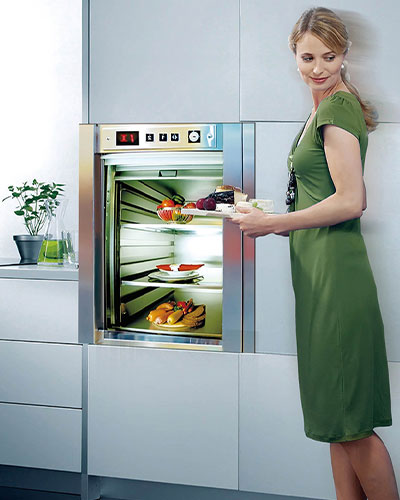Dumbwaiters: Enhancing Efficiency Safely in Residential and Commercial Settings
Dumbwaiters, once a staple of historical estates, have evolved into indispensable tools for modern buildings seeking efficient vertical transportation of goods. Whether in residential homes or bustling commercial complexes, their ability to streamline operations while maintaining safety is a paramount consideration for potential users.
Understanding Dumbwaiters
Dumbwaiters are small freight elevators designed to transport goods between floors. They serve a variety of purposes, from delivering food and beverages in restaurants to ferrying documents in office buildings. Their compact size and versatility make them ideal for spaces where larger elevators may be impractical or unnecessary.

Safety Features and Regulations
One of the foremost concerns when considering dumbwaiters is their safety, particularly in environments where they interact closely with people. Regulatory bodies enforce strict guidelines to ensure dumbwaiters meet safety standards. These often include provisions for:
Door Interlocks: Preventing doors from opening when the dumbwaiter is in motion, safeguarding against accidental falls or collisions.
Overload Sensors: Halting operation if the weight exceeds the dumbwaiter's capacity, reducing the risk of structural strain or malfunction.
Emergency Stop Buttons: Allowing immediate halting of operations in case of emergencies, ensuring prompt response to unforeseen circumstances.
Compliance with these regulations is crucial for both residential and commercial installations. Professional installation by trained technicians is typically recommended to ensure these safety features are integrated correctly.
Operational Considerations
The operational safety of dumbwaiters also depends on proper usage and maintenance:
Regular Maintenance: Scheduled inspections and maintenance help ensure that all safety features are functioning correctly. This includes checking mechanical components, lubricating moving parts, and testing emergency systems.
User Training: Users should be educated on loading capacities, proper loading techniques, and emergency procedures. This ensures that the dumbwaiter is used in a manner that minimizes risks.
Residential Settings
In residential settings, Dumbwaiters are often installed to facilitate the movement of groceries, laundry, or other heavy items between floors. Their use can significantly reduce strain and physical effort for residents, particularly in multi-story homes or apartments.
Commercial Applications
Commercially, dumbwaiters are invaluable in settings like restaurants, hotels, hospitals, and office buildings. They expedite service, improve efficiency, and maintain the flow of operations without the need for staff to physically transport goods manually across different floors.
In conclusion, dumbwaiters can be safely utilized in both residential and commercial settings when installed, maintained, and operated according to established safety guidelines. Their compact design and specialized functionality offer significant advantages in enhancing productivity and convenience while mitigating potential risks associated with manual handling of goods. By adhering to safety regulations, conducting regular maintenance, and ensuring proper user training, individuals and businesses can confidently integrate dumbwaiters into their operational strategies, enhancing overall efficiency and safety within their premises.











